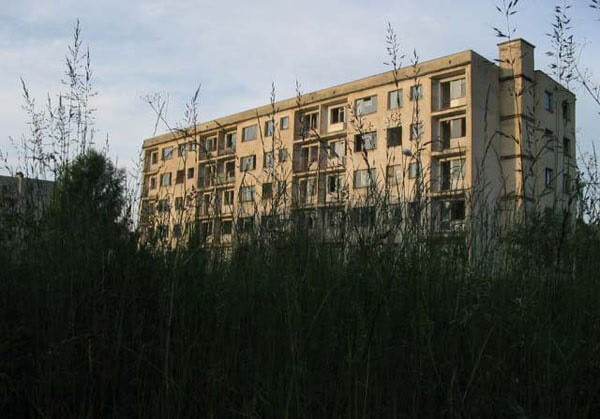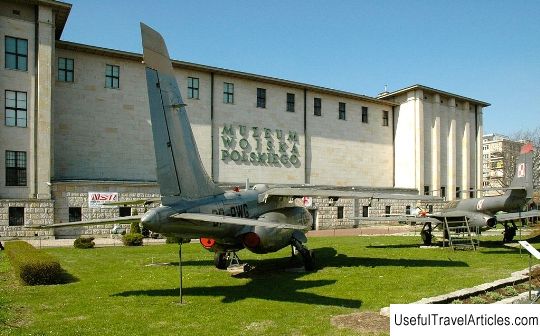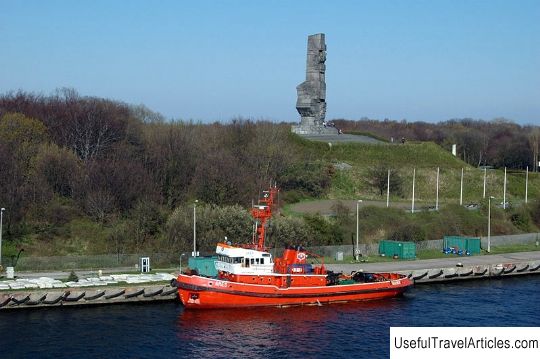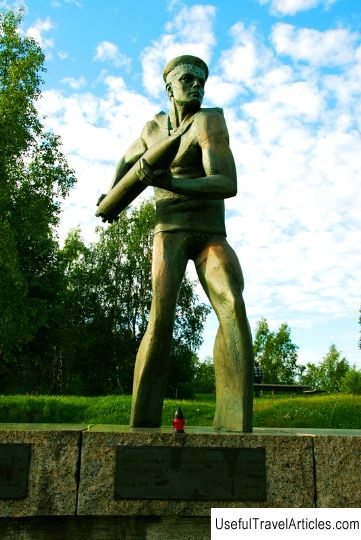Clomino Ghost Town
Rating: 7,5/10 (100 votes)   Clomino The history of the military town of Clomino, considered the only Polish ghost town, began during the Second World War. German troops, who occupied the entire territory of Poland by the beginning of the 1940s, created two military garrisons and one tank training ground here. Already in 1940, the Gross-Born garrison was completely converted into a concentration camp, where captured Polish partisans, Jews and other persons who did not please the occupation regime were exiled. According to Polish sources, there were 11,000 prisoners of war here before the arrival of the Red Army.  Clomino The settlement was not marked on the Polish maps due to its special secrecy. Soviet maps presented it as the Polish village of Grodek. By the end of the 1940s, there were about 50 objects – military boxes for heavy weapons, utility blocks, residential areas. To ensure a comfortable stay for families, a kindergarten, a school were created, and a small cinema was built from entertainment facilities. Until the 1990s, about 6 thousand people lived here – they were mainly Soviet military. With the collapse of the USSR, the question of the expediency of deploying a military contingent in Poland arose almost immediately. For some time, the village lived the same life, but the Polish authorities made it clear to everyone that they did not want to see a single Russian soldier on their territory. Since 1992, the slow process of withdrawing the remnants of the former Soviet army and the Northern Group from the Polish garrisons began. The military town was already empty by 1993. Immediately after the departure of the Russian army, Clomino was subjected to brutal looting. On the very first day after the soldiers left, the looters plundered and practically razed the cinema, doors, window frames and everything that was left or abandoned from the apartments were taken out In a matter of weeks, the town was put in a catastrophic state. The Polish authorities worried about its fate for some time, but then it was decided to leave Klomino in the care of the municipality.  Clomino Excursions to this place are organized independently, but there is no ban on visiting the town – tourists go here on their own responsibility. The best way to get here is from Szczecin, if only because you can get to the capital of the West Pomeranian Voivodeship from any major Polish city.  Clomino It is best to rent a car in Szczecin – taxi drivers in the direction of Klomin are going with reluctance and some apprehension. A plus, for a trip to such a remote place from the city, you will have to pay an impressive amount – a rented car will be much cheaper. For those arriving in Clomino for the first time, guests who have already been here are advised to go around the wooded surroundings – there is still a chance to find the burials of prisoners of war in German camps. Most of the graves do not have any plaques – ordinary crosses made of thick birch branches. Until now, the question of the fate of several burials has not been finally resolved, but every year their number is decreasing. On the way to the central entrance to the city, travelers will be greeted by a rusted stele with the image of the Order of Victory and text in Russian. Of any infrastructure of the city, the hospital is the best preserved, or rather, what is left of it. The walls of the hospital building look reliable, but inside it is better to move around with the utmost caution – flights of stairs have collapsed here and there, and plaster regularly falls from the ceiling. Almost all the chambers have been looted, not even the glass left on the window frames. Only rare graffiti on the walls reminds of the periodic presence of people here.  Clomino Residential buildings do not present such a depressing picture, but there is no point in looking for any treasures here – leaving military families took care of that. So that even the radiator batteries in the apartments are cut off. The doors of some apartments have traces of forced entry, but in most of them there was nothing to rob in the 1990s. Visitors to Clomino often take pictures of the view from the balconies of abandoned houses, where you can clearly see what condition they are in. Most of the city is now covered with thickets of trees and weeds. In some places you can see faded propaganda drawings applied directly to the walls of houses, but this is all that could confirm the presence of Russians here. It is best to move around the city during the daytime, to make it as safe as possible.  Clomino We also recommend reading Fishing in Indonesia Topic: Clomino Ghost Town. |




